Parrot is the name of a large group of colorful birds found chiefly in warm, tropical regions. They are popular as pets because they become affectionate and tame, and many can be taught to talk. Parrots range from about 3 inches (8 centimeters) to over 3 feet (90 centimeters) long. Most parrots have thick, hooked bills, and many have long tails. Parrots also possess short legs and feet with two toes pointing forward and two pointing backward. This arrangement of the toes is called zygodactyl << zy guh DAK tuhl >>. These strong, grasping feet enable parrots to grasp fruits and nuts, climb, and even hang acrobatically from tree branches. Parakeet is a general name for many kinds of small- to medium-sized parrots, especially those with long, pointed tails.
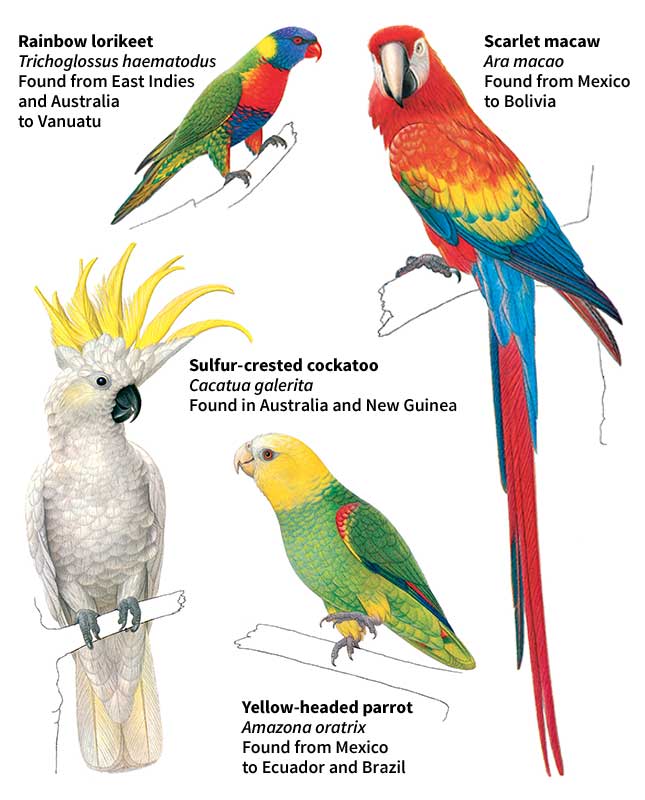
Parrots are noisy, sociable birds that live chiefly in forested areas. Some live in savannas (grassy, thinly wooded areas) and deserts. Parrots commonly eat fruits, nuts, seeds, and buds. Some also eat nectar and pollen.
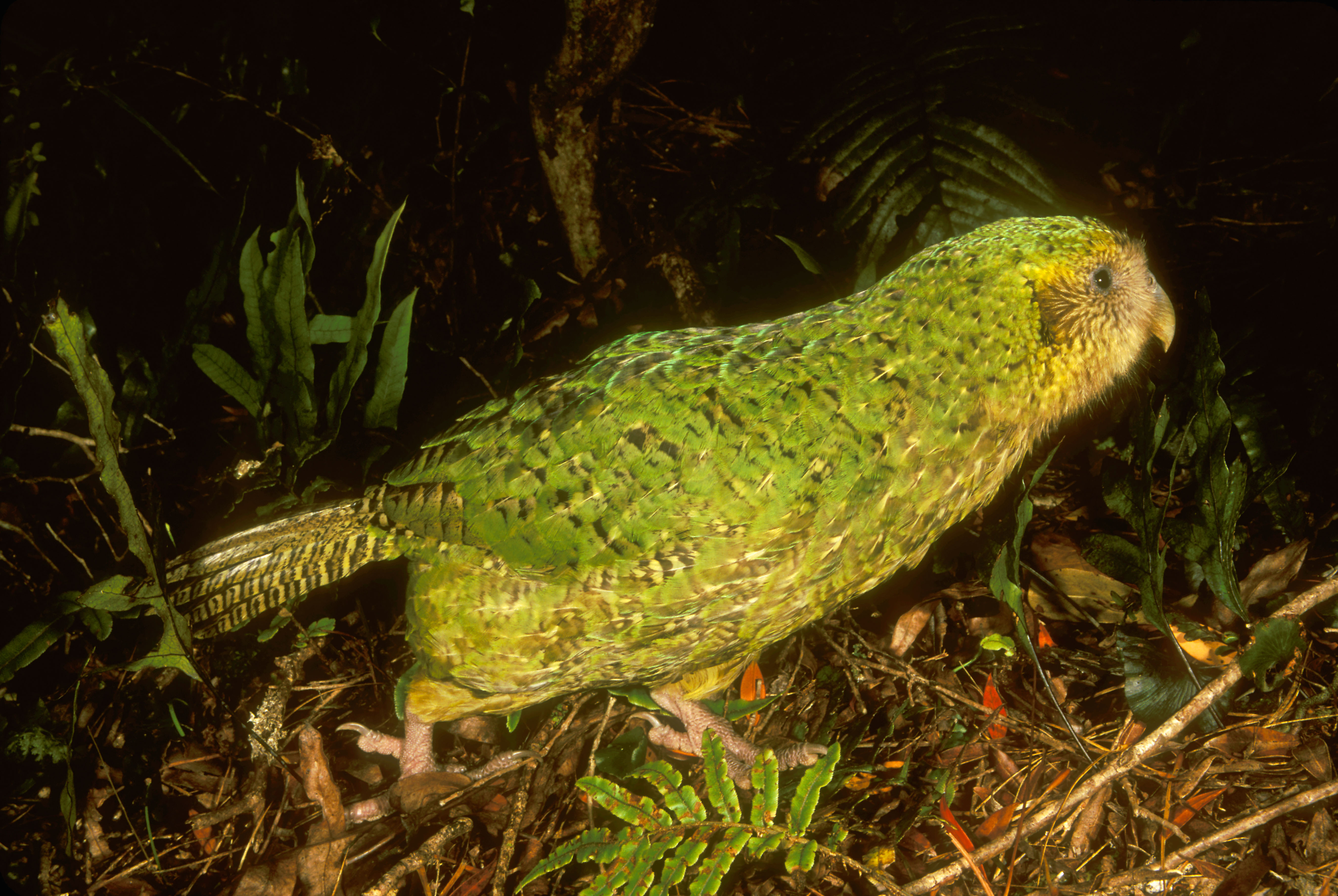
Most parrots choose one mate for life. Female parrots lay round, white eggs. They deposit the eggs in holes in trees, on the ground, in cracks in rocks, or in holes dug in termite nests. The monk parakeet of Argentina builds a huge community nest out of sticks. Many pairs of monk parakeets share the nest, which provides a safe place to lay eggs and also protects the birds from cool weather. Other parrots may nest in artificial nest boxes placed in trees by people.
Kinds of parrots.
There are about 350 species of parrots. About half live in Central and South America. Most of the rest live in Australia, New Guinea, and nearby Pacific islands. About 50 species live in Africa and southern Asia. The United States once had its own species of parrot, the Carolina parakeet, but it became extinct in about 1920 because of hunting and forest destruction. A rare species, the thick-billed parrot, lives in western Mexico and may wander into southern Arizona and New Mexico. The Puerto Rican parrot is an endangered species. 
Parrots of South and Central America.
The macaws are large parrots that live mainly in tropical lowland forests of South America. A few species live in Central America. Macaws have long, pointed tails and huge bills. The blue hyacinth macaw is the world’s largest parrot by length. It grows up to 39 inches (100 centimeters). Amazons are predominantly green parrots with big, chunky bodies and short, squared tails. Colorful spots adorn their wings and head. These birds live in treetops in the tropical forests. Parakeets and conures are small to medium-sized, mainly green parrots with long, pointed tails. Parrotlets are tiny parakeets with short tails.
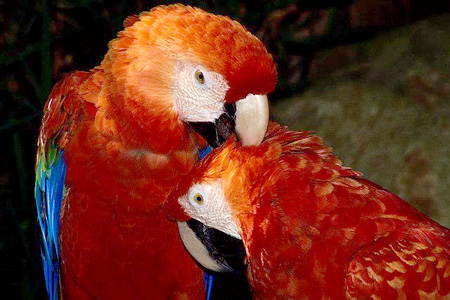
Parrots of Australia and New Guinea.
Cockatoos live in Australia, New Guinea, and nearby islands. They have large, thick bills. Most cockatoos are white with bushy crests of feathers on their heads. The palm cockatoo is a large, jet-black bird. It has a bare skin patch on its cheek, which may turn bright red when the bird is alarmed. The rose-colored galah lives in large flocks in central Australia. The cockatiel, a long-tailed relative of cockatoos, inhabits mainland Australia.
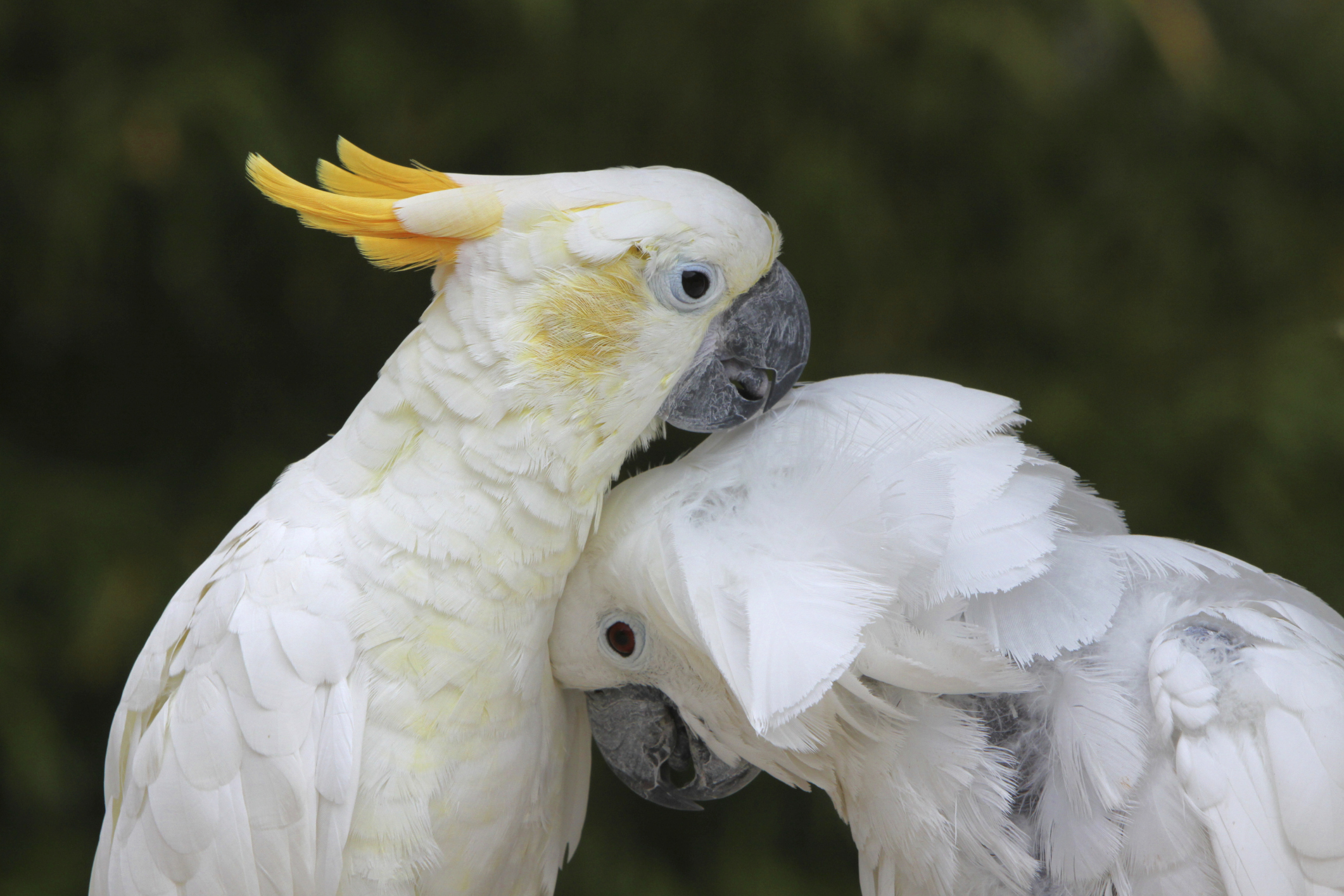
Lories and lorikeets live mainly in wet forests in New Guinea, Australia, and nearby islands. They are small to medium-sized parrots with black, red, or orange bills. Their bills are the longest and narrowest of any parrot, and they have brush-tipped tongues for gathering pollen and nectar. The tiny pygmy parrots of New Guinea have extremely long toes. They creep up tree trunks, like small woodpeckers, in the thick forest. The budgerigar << buhj uhr ee GAHR >>, from central Australia, is the best-known parakeet because of its popularity in zoos and as pets. The rosellas, found in coastal Australia, have bold patterns of blues, reds, and yellows on their bodies.
Parrots of New Zealand
include some of the most unusual species. The large, chunky kea feeds on fruits and grubs (immature insects). It also eats dead animals it finds on the ground. The kea is popular with tourists because of its habit of perching on cars to beg for food. The large, forest-dwelling kākā has a long, strong beak that it often uses to tear apart dead wood in search of insects. The kākāpō, or owl parrot, has an owllike face and cannot fly. Unlike most parrots, the bird is nocturnal—that is, it sleeps during the day and becomes active at night. The owl parrot is close to extinction because of mammal predators that people have introduced to New Zealand. These predators include rats, cats, and mongooses.

Parrots of Africa and southern Asia.
Hanging parrots are tiny, mainly green parrots of southeastern Asia and the islands of Indonesia. Their name comes from their strange behavior of roosting upside down at night like bats. The rose-ringed parakeet lives in tropical Africa and southern Asia. It has a long tail, a bright red bill, and a bright green head. The nine species of lovebirds are small African parrots. They have short, rounded tails and rather large bills. They are called lovebirds because they use their bills to caress each other. The large gray parrot, from the west African rain forests, is a popular pet because it can learn to say words. 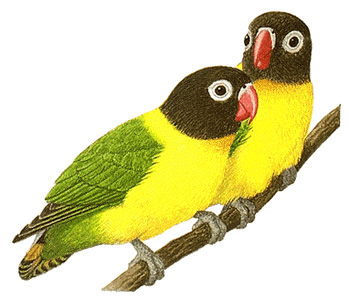
Parrots and people.
People should keep parrots in clean, warm cages large enough so that the birds can exercise. Parrots need water, fresh air, and a variety of foods, including seeds, fruits, and vegetables, to stay healthy. When well cared for, parrots can live extremely long lives. Several kinds of large parrots are known to have lived for more than 50 years in captivity. Smaller species, such as parakeets, can live up to 20 or 30 years.

Parrots are among the most intelligent birds and can learn to solve fairly complex problems. Many species of parrots are prized for their ability to repeat words or to learn complicated tricks. The gray parrot can learn new phrases within hours of teaching. It even has been shown to use human words or other symbols to communicate feelings such as hunger, fear, or boredom.
Parrots may carry the disease psittacosis, also called ornithosis, which can be transmitted to people who handle infected birds or breathe dust contaminated with their droppings. Because of this disease, all parrots must be examined by a health officer before being shipped into the United States and some other countries.
Many parrots are in danger of extinction, largely because people have destroyed much of their habitat. Some dealers sell illegally captured wild parrots at high prices. People should buy parrots only from licensed dealers who sell birds that were bred in captivity.
